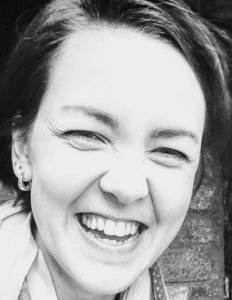
Research Software Engineer
Newcastle Univeristy
Dr Kate Court is a research software engineer (RSE) at Newcastle University. Kate originally studied fine art and worked in teaching and research positions before retraining as a software engineer.
Kate is one of the co-founders and facilitators of hupskills; aimed at equipping mums with entry level digital skills to build their confidence with technology.
Project Overview
The Digital Storytelling project was led by Newcastle University researcher, Dr Michael Richardson. Seven Stories of the Tyne web application is aimed at young fathers and their children. Accessed through users’ mobile phones, the application includes an interactive ‘treasure map’ showing their current location, a route to follow, and ‘storytelling points’.At each storytelling point, the user is prompted to explore the local landscape and view 3D Augmented Reality (AR) models with their phone cameras. As the application guides the users from Newcastle Quayside to Seven Stories, The National Centre for Children’s Books, the young fathers and their children create their own story, responding to what they see around them, real and virtual.
Did you work with an RSE from the beginning of the project?
The researcher applied to work with the university’s RSE team as part of a funded project aimed at creating proof of concept applications to inform future funding bids, Dr Court was involved throughout this pilot project. However, it was informed by prior research projects undertaken by the researcher.
Once you started working with the data did you encounter any specific problems or challenges? How might an RSE have been a useful addition to the project?
Making the application engaging for the user group was key and the project had invaluable input from members of North East Young Dads and Lads to help us overcome this challenge.From a technical perspective, creating a mobile-friendly Augmented Reality application within a short timeframe, and in an area with poor network coverage, were the biggest challenges that RSE involvement addressed.
What were the benefits of working with an RSE?
The short project resulted in a working prototype that is deployed and available for testing by user groups. Further, this will act as a proof of concept in future funding bids, to demonstrate the potential of co-designing AR interactive storytelling with local community groups and cultural organisations.
What tools and software did you use for your analysis? Is the software, code, and data that you used available for others to reproduce your work?
To enable production within a condensed timescale, the pilot is a web application, but is optimised for mobile devices and designed to give the ‘feel’ and functionality of a native app. This was achieved using Ionic app framework. The AR interactions were created using AR.js and mapping was provided by Mapbox, Thunderforest and Leaflet.js